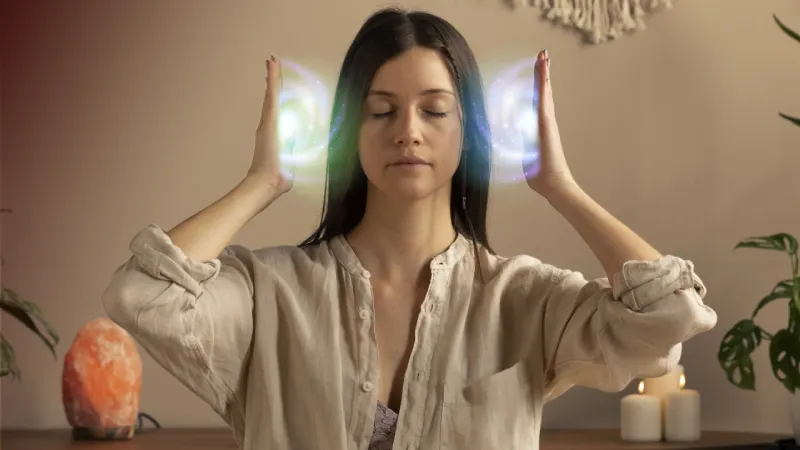Reiki is an alternative healing practice that has recently seen a surge in clientele. The concept behind this Japanese term, which translates as “universal life energy,” is that all organisms have a common source of vitality. Reiki treatment aims to restore the body’s natural energy flow to facilitate healing and calm the mind. This essay will examine the practice of Reiki and its effects in further detail.
The History of Reiki
The origins of Reiki can be traced back to Mikao Usui, the founder of the practice, who initially emphasized spiritual and psychological growth rather than physical healing in his lectures on Reiki. On the other hand, as the popularity of the practice increased, a greater focus was put on Reiki as a kind of therapeutic intervention. The teachings of Usui were ultimately brought to the Western world in the middle of the 20th century after being handed down by several instructors.
Reiki healing services are widely practiced in many parts of the world and have been incorporated into various medical settings as an alternative or complementary therapy. As more people get trained in Reiki, the practice continues to develop and change due to incorporating these new practitioners’ experiences, viewpoints, and methods.
How Reiki Works
The Japanese practice of Reiki is predicated on all living things being permeated with a universal life force energy. According to Reiki principles, the energy can become blocked or imbalanced in the body, leading to physical, emotional, or mental health issues. This energy can be channeled to facilitate the body’s natural healing processes. Practitioners act as a channel, allowing this energy to flow from their hands into the patient’s body.
Another technique used in Reiki is visualization, where the practitioner visualizes the flow of energy in the body and uses mental imagery to promote healing. Reiki is often used as adjunctive therapy in conjunction with other forms of medical treatment because of its potential to ease both physical and emotional ailments.
What to Expect During a Reiki Session
The duration of a normal Reiki session ranges from sixty to ninety minutes. The patient remains fully clothed during the massage and reclines on a massage table or sits in a chair. The practitioner will start by laying their hands on or near the patient’s head and then work their way down the body using several hand positions. They will then move on to the patient’s arms and legs. During the treatment, the patient could experience a warming or tingling feeling; some individuals may even fall asleep.
The Benefits of Reiki
It is believed that Reiki treatment can facilitate relaxation, help decrease tension, and assist with the management of pain. In addition, it is used to treat a diverse range of medical disorders, including anxiety, depression, and sleeplessness. While Reiki is not widely accepted as a scientifically proven form of healing, many people who have received Reiki treatment report positive effects, including reduced pain, improved relaxation, and enhanced emotional well-being.
Finding a Reiki Practitioner
Before choosing a Reiki practitioner, it is important to conduct thorough research to ensure that they are qualified and skilled in their field. If you want to discover a trained Reiki practitioner in your region, you can check with organizations that are dedicated to the practice of Reiki professionally.
To obtain a sense of the kinds of things that prior customers went through, it can be useful to read reviews or testimonials written by those customers. Additionally, it is important to feel comfortable with the practitioner and their approach, so before scheduling a session, it is a good idea to consider scheduling a consultation or asking questions about the practitioner.
Receiving Reiki Remotely
The Reiki practitioner and the patient will generally interact with one another during a remote Reiki session via a video chat or a phone discussion to discuss the patient’s requirements and goals for the session. After that, the practitioner will transmit Reiki energy to the patient, who can take in the healing vibes without leaving the convenience of their own home.
Even when the practitioner is not physically there, the patient can still experience a comparable warming or tingling feeling and a profound sense of relaxation. It is crucial to highlight that remote Reiki treatment can only be done with a certified practitioner who will protect the patient’s safety and confidentiality. It is also important to mention that this therapy can only be done with another qualified practitioner.
Preparing for a Reiki Session
It would help if you had a clear and open dialogue with your Reiki practitioner about any particular body issues or regions you want them to concentrate on during the session. It is recommended to wear comfortable, loose-fitting clothing and to remove any jewelry or other accessories that may interfere with the flow of energy. Additionally, eating a light meal before the session is recommended, as an empty stomach may lead to discomfort during the treatment. Following a Reiki session, it is advised to drink plenty of water, take some time to unwind, and reflect on the experience.
Conclusion
Reiki is an energy healing method that can be used in conjunction with conventional medicine. It seeks to restore and maintain the body’s natural energy flow by working with the underlying premise that all living things share a vital force. If you’re considering Reiki treatment, it’s important to do two things: locate a trained practitioner, and relax well before your appointment.
Read More:




